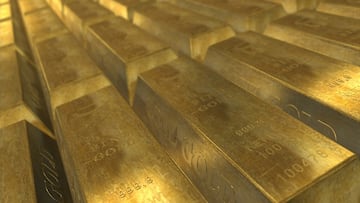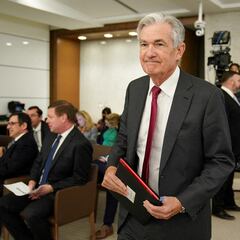Why has the price of gold skyrocketed in 2023?
The price of gold is once again hitting record levels. What are the factors driving the rise in the value of the metal?


The price of gold is hitting new highs, a sign that investors are leaning toward physical assets as the economy continues to weather a period of great uncertainty. Currently, one kilogram of gold sells for $2,019, down from the record high of $2,116 seen on 3 December. In December 2022, the kilo was valued at $1,809 —an eleven percent increase in just a single year.
The price of gold increased in 2022 due to the war in Ukraine, the resulting global energy crisis, and the inflationary pressure caused by these events. In March 2022, the price of gold was $2,052. Additionally, the lingering effects of COVID-19 on supply chains further exacerbated inflation. Corporate greed also played a role in worsening inflation, as some companies took advantage of their market power to raise prices beyond what was necessary to compensate for increased business costs. As inflation began to decrease, so did the price of gold, but as concerns over a regional conflict in the Middle East emerged.
#GOLD Hits All-Time High! 📈
— BitDelta (@bitdelta) December 5, 2023
Celebrate as #GOLD reaches $2145, experiencing a brief dip from profit-taking. Despite a bullish outlook, a noticeable retracement has occurred. Anticipate stabilization between $1980 - $2000 post-dust settling.
Own $GOLD? If not, don't miss out on… pic.twitter.com/GjZS5XLVMm
What drives the price of gold?
In 2021, the Federal Reserve provided an answer to this question.
“Gold is a hedge against inflation,” wrote a research team at the US central bank. During times of inflation, the demand for gold increases. Supply is fixed, with the authors explaining that “the notion that gold can be identified with an inflation protection motive is, of course, connected with the fact that, in contrast to fiat money, gold is in nearly fixed supply.” Thus, under conditions of increased demand with supply remaining constant, the prices will rise.
However, the response from the central banks to inflation increasing interest rates, in theory, the authors should depress the price of gold. However, with interest rates at the highest in recent history, investors are undeterred and continue purchasing the metal. This situation challenges the logic outlined in the Fed’s paper, which did write in a caveat that “predicted negative co-movement of the real interest rate and the real gold price does not show up in these data before 2001.”
The influence of geopolitics on the gold market
Related stories
Louise Street, a senior market analyst at the World Gold Council, noted the strength of gold in the high-interest environment, noting that “demand has been resilient throughout this year, performing well against the headwinds of high-interest rates and a strong US dollar.”
Central banks added a net 42 tonnes to global official gold reserves in October. Get the data: https://t.co/yT1WM0kcNP pic.twitter.com/g8gTMpwDhU
— World Gold Council (@GOLDCOUNCIL) December 5, 2023
Much of the strength is attributed to geopolitical events and tensions worldwide that encourage central banks to increase their holdings of precious metals. In October, the organization reported that reserves by central banks rose by 42 tonnes.

